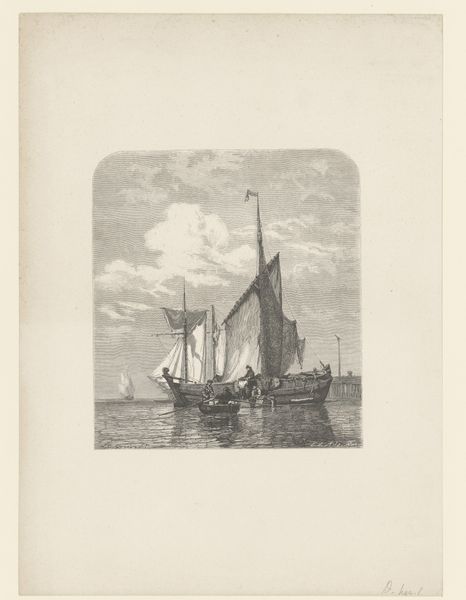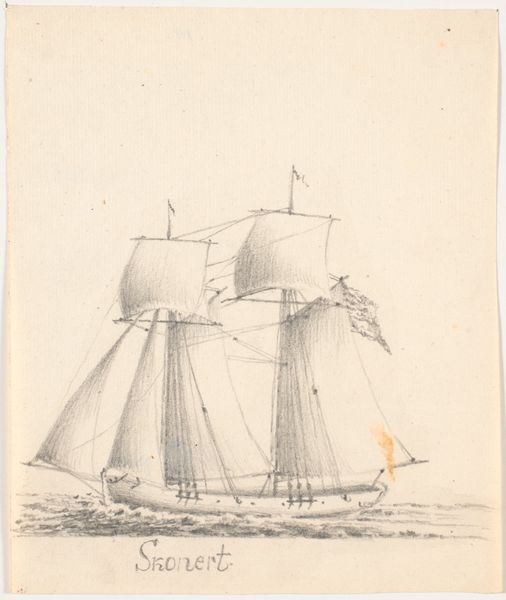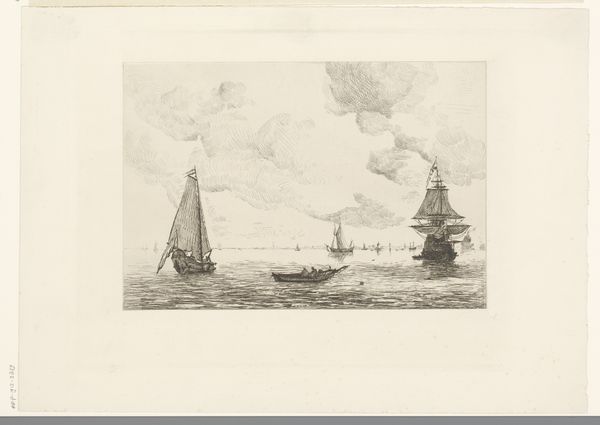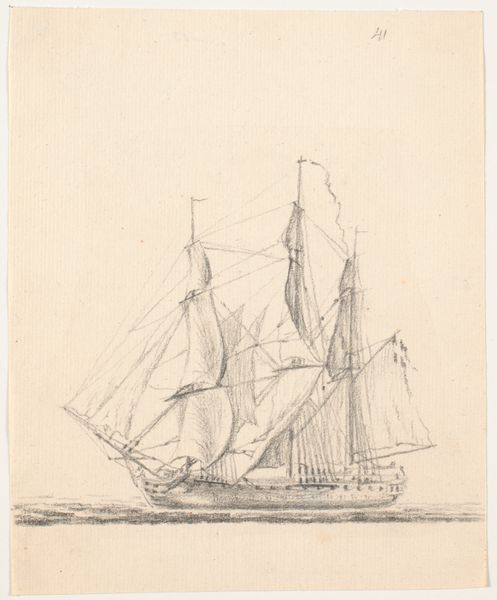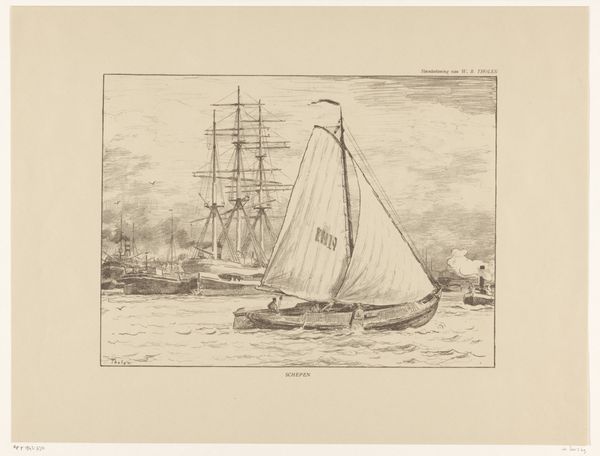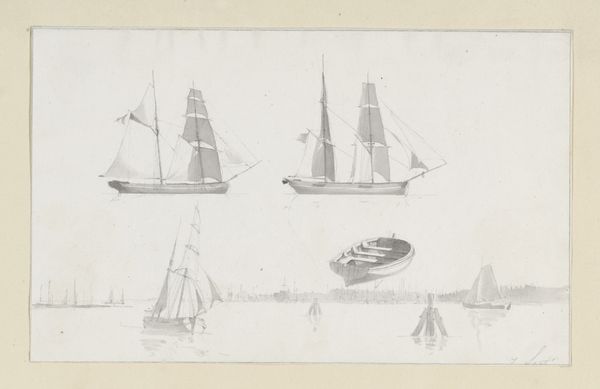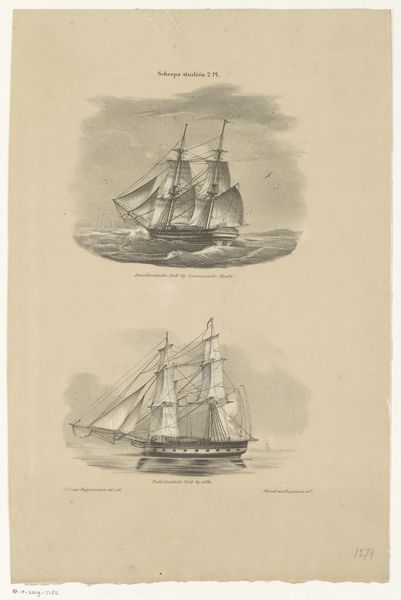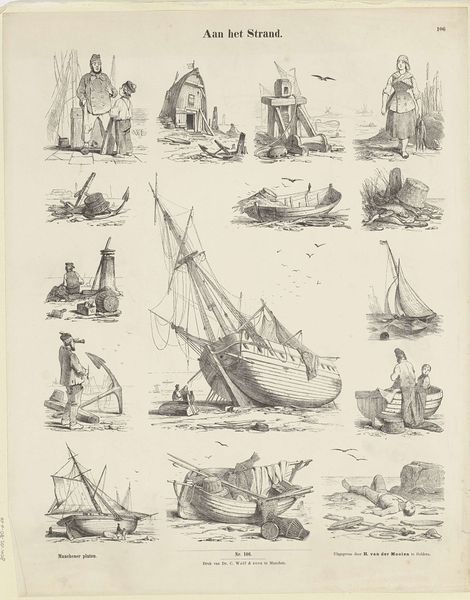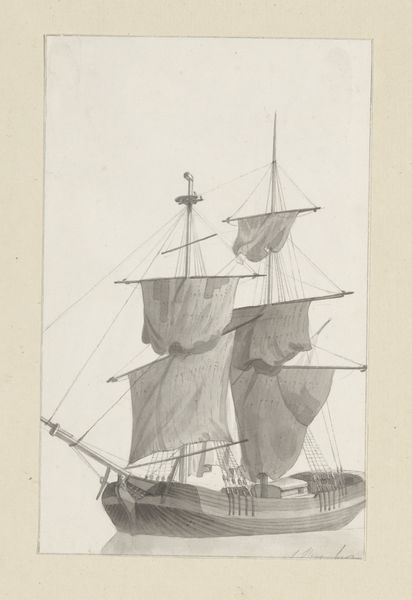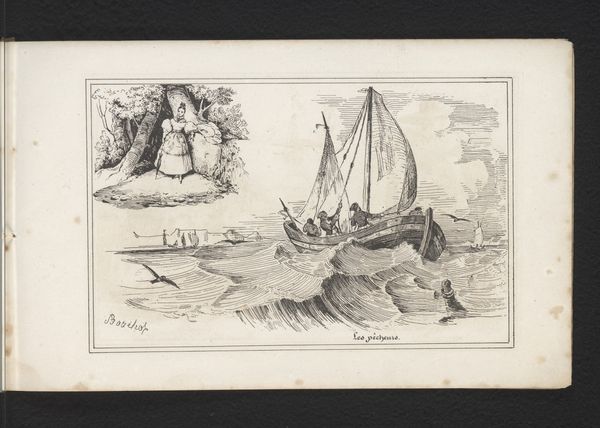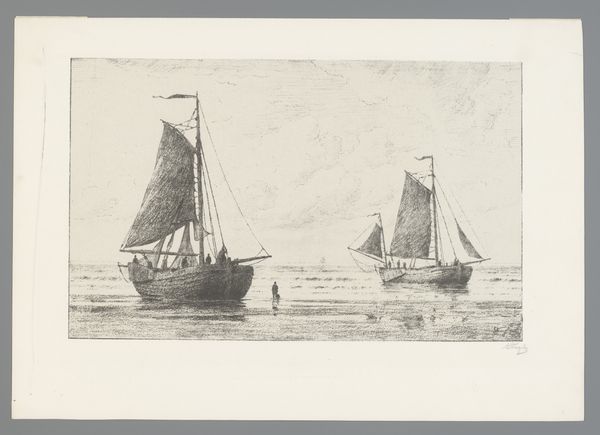
Dimensions: height 440 mm, width 348 mm
Copyright: Rijks Museum: Open Domain
Curator: This is “Zeilschepen,” or “Sailing Ships,” a print created sometime between 1903 and 1919 by Arie Willem Segboer. It presents a collection of vessels rendered in delicate watercolors. What strikes you most upon first glance? Editor: Well, I’m immediately struck by its deceptive simplicity. At first, it seems a straightforward nautical study, yet the arrangement in a grid complicates things, doesn’t it? Almost like a fragmented atlas, evoking colonialism, trade routes, and the labor inherent in seafaring. Curator: An interesting read. Formally, I see a convergence of styles. There's impressionism in the fleeting quality of light on the water and ukiyo-e influences in the stylized waves and compositions. Note how each vessel occupies its own discrete atmospheric space. The careful rendering of the rigging against varied skyscapes also establishes a complex visual rhythm. Editor: Absolutely. And considering its context—"Nieuwe Nederlandsche Kinderprenten" or "New Dutch Children's Prints"— the seemingly innocuous subject matter is more than educational. It's indoctrination, shaping national identity by romanticizing the Dutch maritime prowess and occluding histories of exploitation. Each sail implies a global reach secured by both daring and, let’s not forget, immense violence. Curator: That might be a stretch, but it's crucial to examine this print’s visual architecture more closely. See how the eye is directed, jumping from one ship to the next. Each image provides a specific sense of space and the vessels have geometric clarity. Notice also the details around each ship that gives an indication of the sea conditions they may encounter. Editor: For whom are these qualities being so painstakingly rendered? By framing it as harmless children's fare, Segboer normalizes the era's unequal power dynamics. These aestheticized ships represent not merely modes of transportation, but instruments of dominion and cultural erasure. What the children are learning and understanding, if they really unpack all of it, should tell them quite a bit. Curator: Regardless, Segboer displays skillful composition by arranging a wide selection of sailing vessels in one frame. Each mini-landscape seems carefully designed. Editor: Yes, and by decoding its cultural implications, this seemingly benign image offers insight into the societal values it implicitly propagates. Thank you, this gave me a whole new approach in understanding the work of Segboer. Curator: Indeed, examining the formal arrangement deepens our awareness. These are valuable additions for our museum's audiences.
Comments
No comments
Be the first to comment and join the conversation on the ultimate creative platform.
